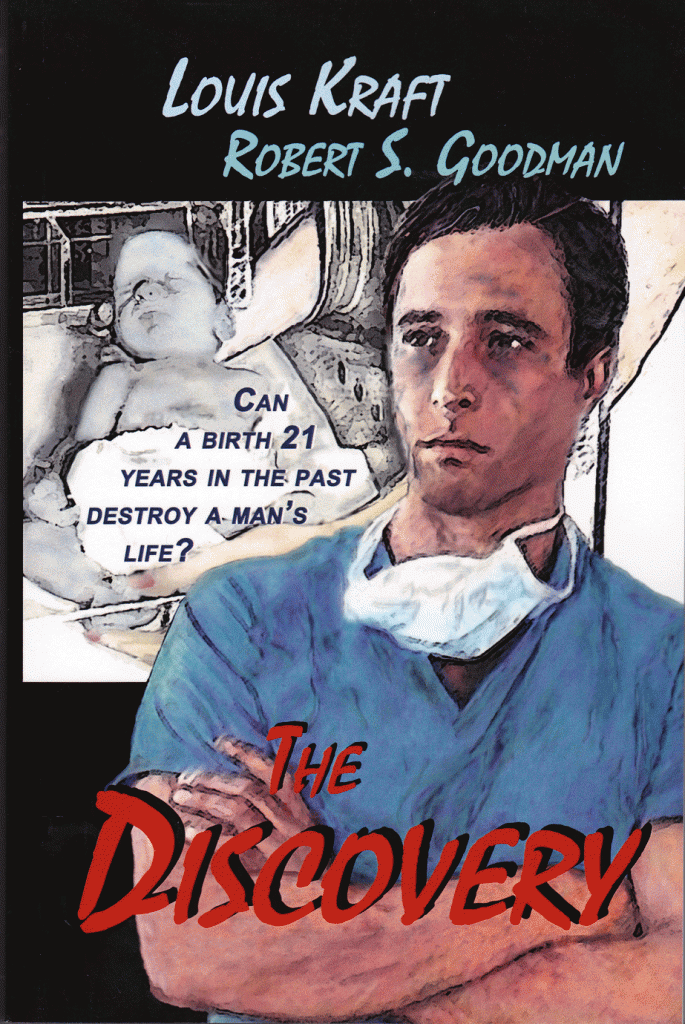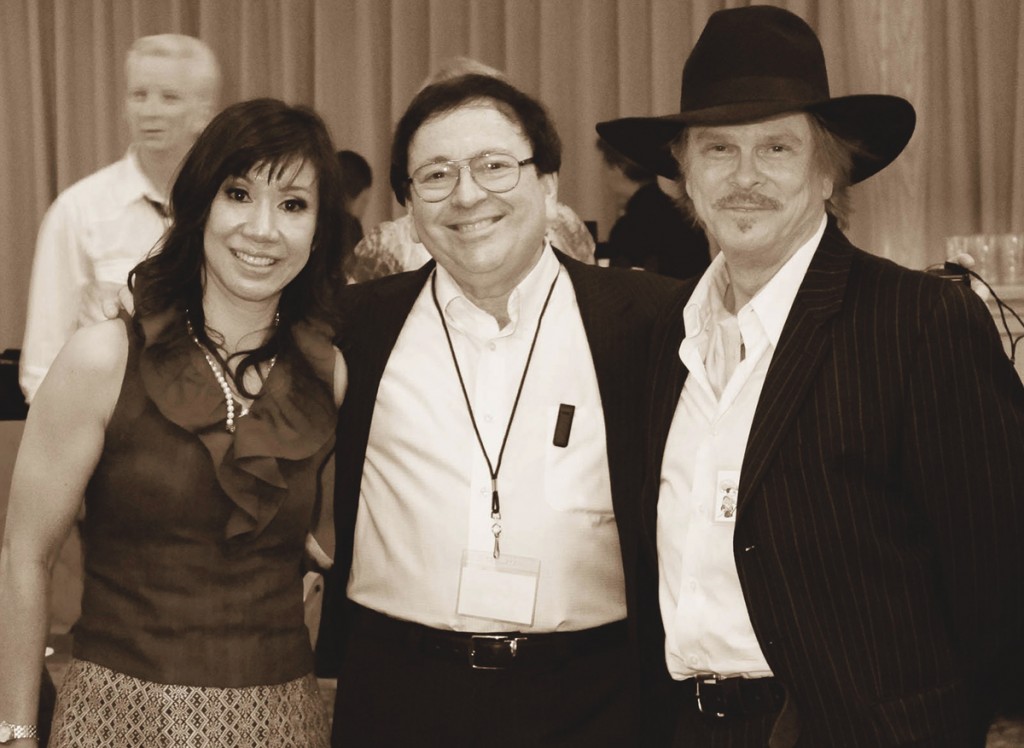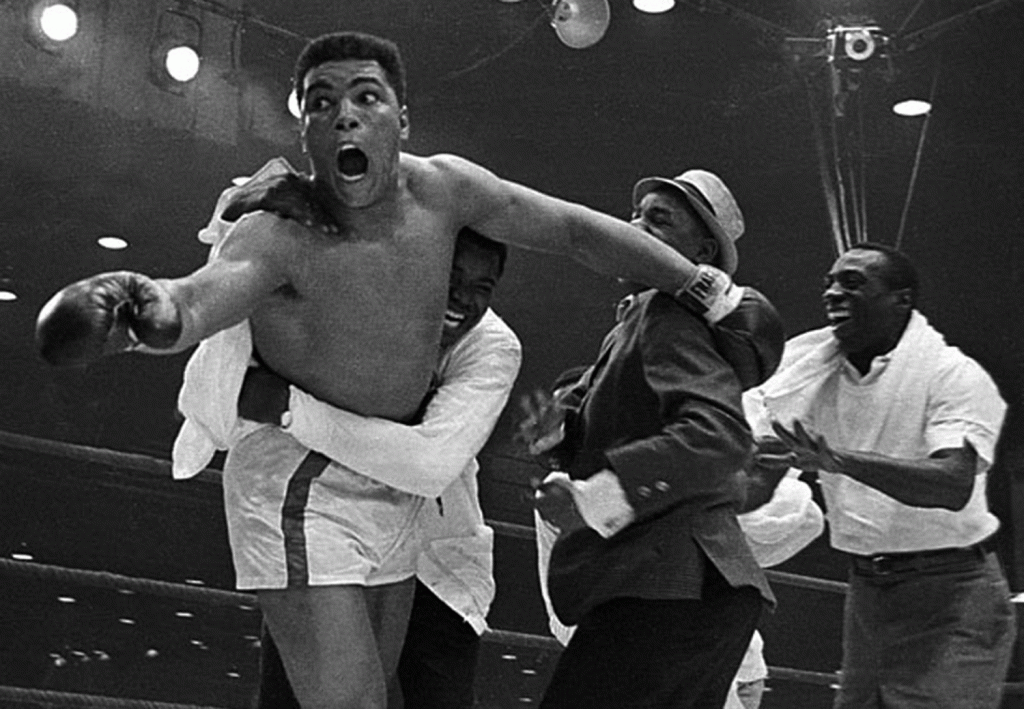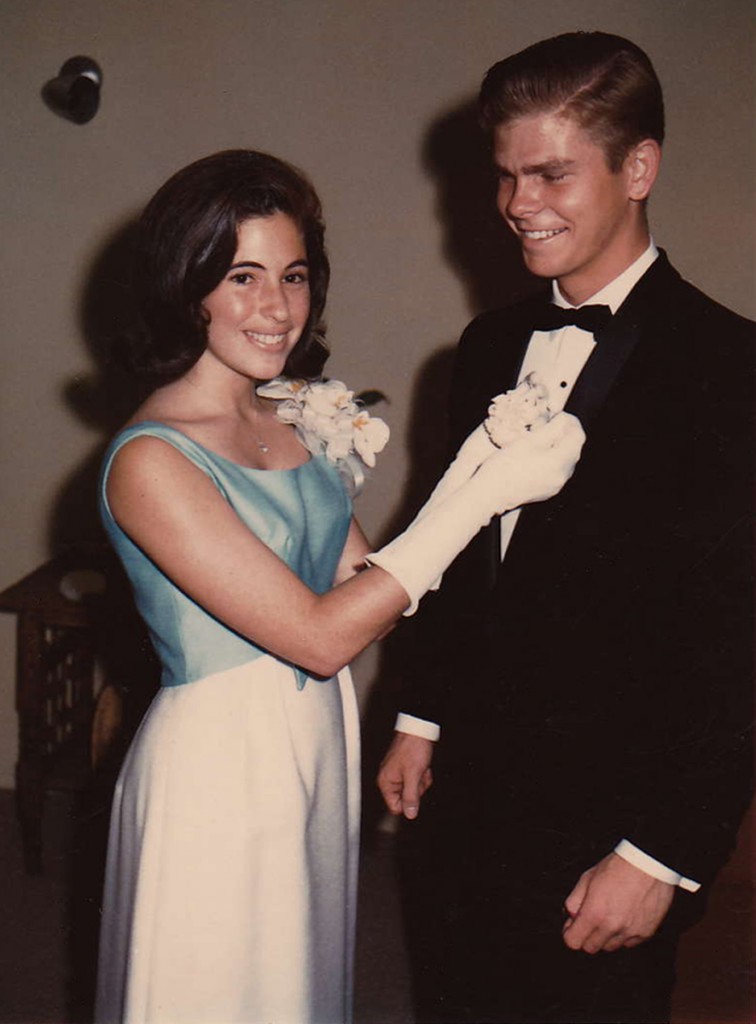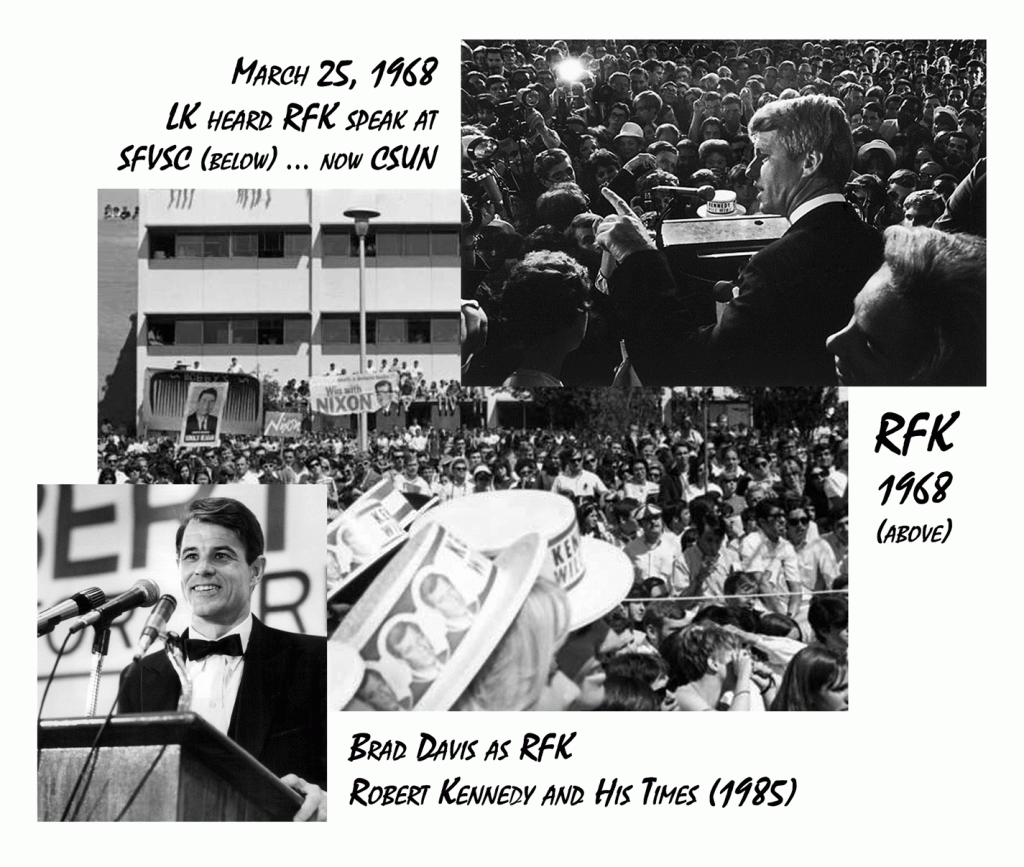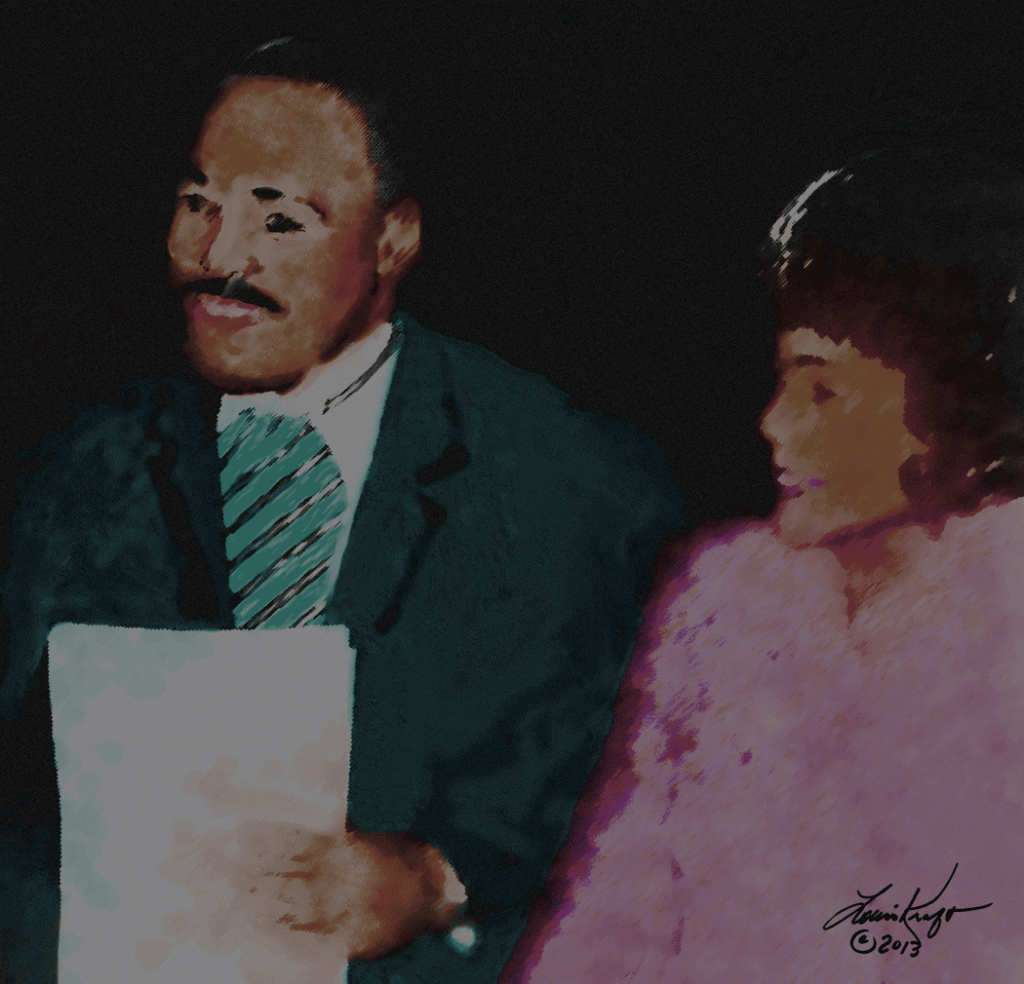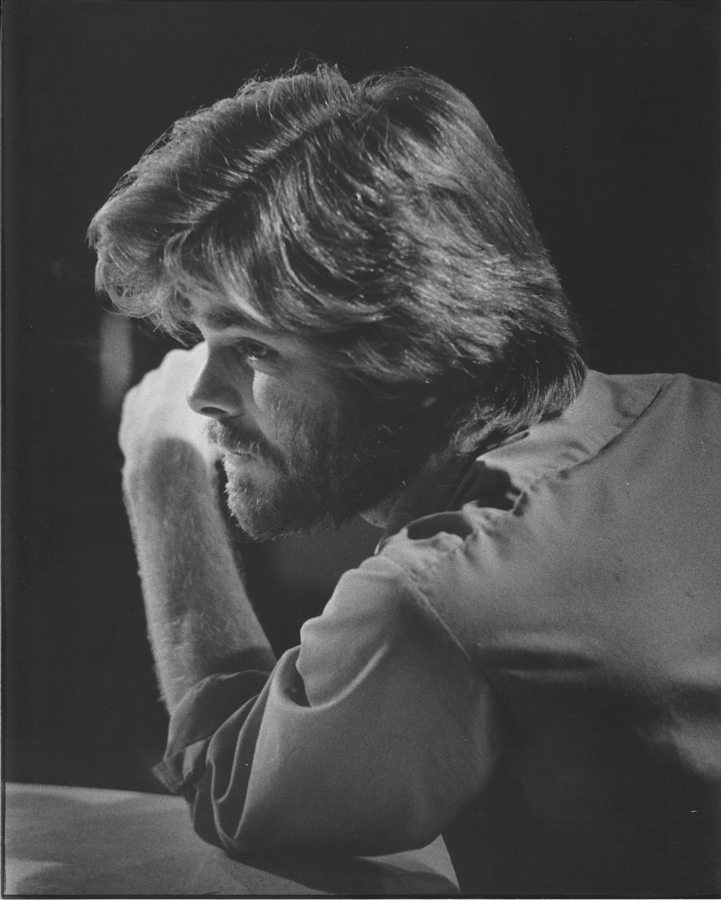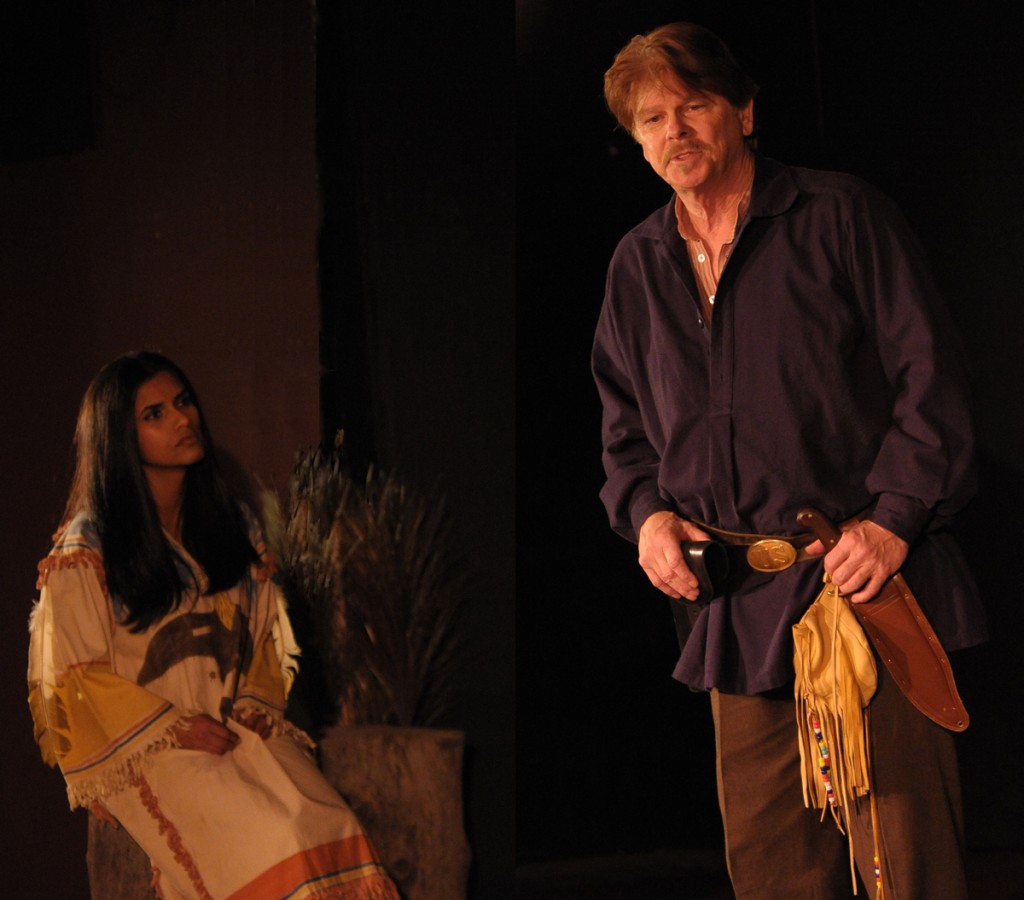Website & blogs © Louis Kraft 2013-2020
Contact Kraft at writerkraft@gmail.com or comment at the end of the blogs
I thought that for the third time my next major blog would deal with race and racism in my life, as this has always been a major piece of my world and always will be.
Actually on other social media it had been advertised as the next blog
as an introduction to dealing with some of the explosive comments
that my blogs had garnered that were both hateful and
threatening. Those who responded, and almost as
a total group, uplifted me from the dark swirl
of what amounted to threats.
I have no intention of shortchanging my world but
at the moment I need time, … and want to keep focused on
Sand Creek and the Tragic End of a Lifeway.
| I have a major announcement to make in regards to Sand Creek and the Tragic End of a Lifeway (It will appear at the end of this blog). |
Who am I?
I’m a pirate, a duelist, an explorer, a frontiersman. More important I’m a person who has walked between race in my world and in past worlds that I never experienced but know intimately (the last half of the 16th century, the 1860s and 1880s, and the 1930s through the 1950s and into the 1970s and beyond).

LK leaning against Ned Wynkoop’s restored home/U.S. Indian agency just outside the perimeter of Fort Larned in Kansas on 22sept2012. I represented Wynkoop that evening when the Santa Fe Trail Association inducted him into their Hall of Fame. Photo by Fort Larned NHS chief historian and my great friend George Elmore. (image © Louis Kraft 2012 & 2015)
My books all deal with the human experience (regardless if they are nonfiction or fiction). They deal with time and place while none of them are in the present. For the record, the only book I’ll ever write that deals with the here and now will be my memoir (and I had better be dead at least one day before it is published). Trust me that my research on this fact is on target and that there can be no room for deviation from what must happen before this book is published, … and you’ve seen a hint of what is to come in these blogs
These are not dark words. Rather they are truths in our modern world. Most people who write about their lives (or have someone else write about their lives for them) steer clear of truth. The reason is probably twofold: 1) They don’t want to be sued for telling the truth, and 2) They do not want to present themselves as less than an exemplary person. Unfortunately fully ninety percent of the autobiographies or memoirs that I have read fall into this category. These books are glossed-over bores that quickly put me to sleep, only to flip the travesty into a box that I’ll give to the Vietnam Vets when I awake. This must be good for I certainly need to sleep, perchance to dream.
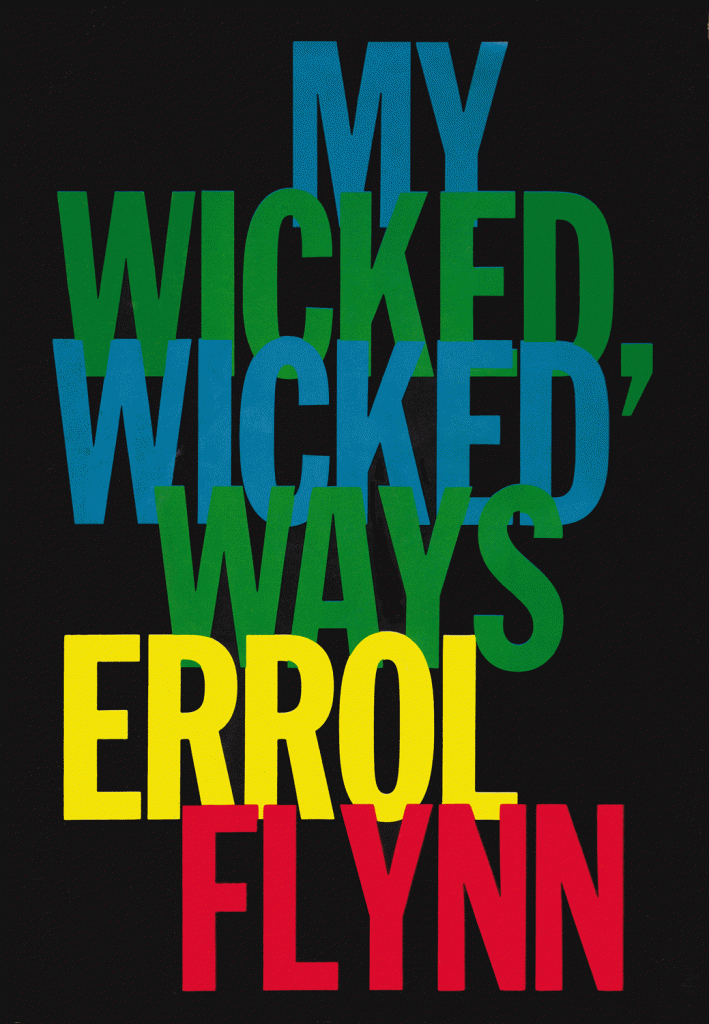
Of course this book has an LK story. It was distributed to book sellers early in 1960. As said Flynn had seen the galleys but he did not live to see publication (he died on 14oct1959). … At the time of publication I was in my first year of high school, and I had a job that I created—I collected bottles and cans to cash in at stores—that I worked almost daily. When the book was published I purchased it. My mother was upset and asked where I got the book. “I bought it.” “The book store sold it to you?” she asked incredulously. “Yes.” My mother knew that Errol Flynn meant a lot to me, even at that early age. “Okay,” she said, “as long as you don’t tell anyone you have the book or what is inside it.” I readily agreed. … Flynn wrote a book that contained a lot of truth—(and to repeat myself) so much so that for the second printing a lot was removed as some people didn’t like what he had written about them. They couldn’t sue Flynn for telling the truth for he was dead, but they made their anger known to the publisher. … Many people have since spread the word that a lot of the book was fiction (certainly in the early portion of the book; Tasmania and New Guinea, that a book I own but don’t totally agree with documented). … I have a lot to say about this. Mainly 1) Flynn changed names and facts to protect friends and himself (trust me, this is not strange in memoir); and 2) I write nonfiction (Custer, Gatewood, Geronimo, Wynkoop, and Flynn, and that includes Olivia de Havilland as she plays a large role in my first book on Mr. Flynn). Guess what: All of these people never documented their past accurately. Why? I’ll tell you why—I can’t document my past accurately. Reason: My memory has changed; it has forgotten or it has evolved into a new view of my life over time (thus I keep boxes upon boxes of documentation for my memoir). … Ditto Custer, Gatewood, Geronimo, Wynkoop, Flynn, and de Havilland. And there is what I said above about Flynn: Protecting himself and friends. … If I have learned a major thing from Flynn’s memoir (and this is my favorite book of all time), it is that when my memoir is ready for publication that it must be published after I am dead for this will be the only way I’ll be able to tell the truth.
The one autobiography that I have read that has forever stayed front and center in my life is Errol Flynn’s My Wicked, Wicked Ways (G. P. Putnam’s Sons, 1959). Mr. Flynn had magnificent help from writer Earl Conrad, who spent prime time with him in Jamaica when the actor-writer had trouble completing his memoir. Of course, Flynn’s story raised eyebrows. Certain personages were misnamed. Read: To protect friends (or Flynn himself), but not Koets/Erben for this was not EF’s doing, but other people Flynn spoke too truthfully about. Read: You pick them (but you had better have a first edition of MWWW, for if not a lot of the swashbuckler’s truths vanished in subsequent printings). Although Flynn knew he was dying (something that he had known for quite some time) he didn’t know that he wouldn’t see the publication of his memoir (although he did see the final galleys and approved them), … and he knew what he could possibly face (and thusly ignored the last love of his life in the book; he simply dedicated the book “to a small companion”).
Relax, my life doesn’t come close to the life that Mr. Flynn lived and shared with the world. But that said I have stories to tell that will result in people pounding on my front door with knives, sabres, Colt revolvers, and other instruments of destruction. I’ve had knives at my throat, guns pointed at me, but perhaps the worst was a surprise package in a plain white envelope with bold red letters that proclaimed: SHAME! This was from an editor in the software world that I worked well with and liked, and the contents were long dark hair. You won’t believe what her voice evolved into on voicemail messages—It was unnerving and chilled me to the bone. Luckily she lived and worked on the East Coast and I lived in SoCal, for otherwise I would have spent my days with my back to a wall while holding a brace of Colts in my hands as I waited for the front door to be bashed open. Are these words extreme? You bet! Are they the truth? Yes. Can I write about this lady and not get sued? Now that is the million-dollar question! … Yes, Mr. Flynn changed names and altered some facts but believe me he did some of this to protect himself (and some of it may have been because his memory had faded, but trust me for he never forgot the name of his friend Hermann Erben).
| We have a lot of homeless people in Los Angeles and some I know on a first-name basis—but I don’t want to join their ranks I do walk the streets, but not as a hunter seeking prey. No! Absolutely not. I walk to be able |
What the hell?
… and how do I illustrate this section?
Perhaps I can use the artwork that I created of the Los Angeles 405 freeway
for my upcoming blog on race, as it is a nightmare. … Don’t think so.
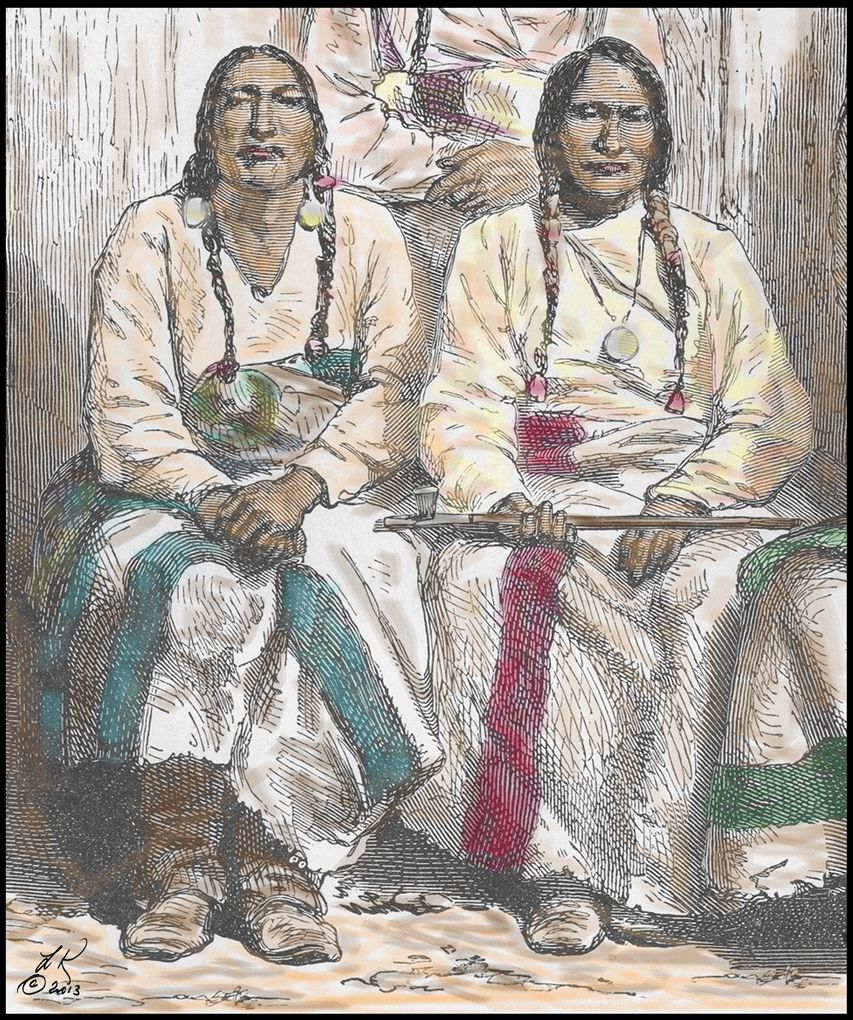
Cheyenne Dog Man Chief Bull Bear (left) and Cheyenne Peace Chief Black Kettle. (art © Louis Kraft 2013)
Just this; we all have lives and all of my subjects (except for Olivia de Havilland and less than a handful of people that I love) have moved on to the next world. … I must treat their lives with the same respect and accuracy as I would Livvie (Ms. de Havilland), Pailin, and everyone else in my life. I can’t treat them with anything less than the truth as my research defines it. Ladies and gents, this also includes my Sand Creek manuscript (Left Hand; John Chivington; John Evans; Charley Bent, BTW I think his brother George almost but not exclusively referred to him as “Charles”; Black Kettle; Bull Bear; George Bent; John Smith; Silas Soule; Ned Wynkoop; Little Raven; Scott Anthony; William Bent and everyone else I’m writing about.

This 1980 book sold a lot of copies, and it is well-written. Unfortunately Higham wrote a lot that wasn’t true (and his major fictions have been debunked). Years later all some people know about Flynn is that he was a Nazi. Nothing printed about him has been farther from the truth. … Ah, the power of words! For the record, when I spoke with Olivia de Havilland about Higham’s biography about her and her sister, Joan Fontaine, all she shared with me was that Higham never contacted her and that he was “an unscrupulous man.”
Unfortunately you can defame the dead in the USA. In my opinion this is a massive crime and should be punished. It isn’t, but just because it isn’t writers and historians like me shouldn’t be able to have an open door and write untruths about people who can no longer defend themselves (and in many cases prove their innocence). … Anyone who writes about the past and calls someone a Nazi supporter or a rapist or a racist or child molester or a butcher of innocent people should be held accountable if he or she cannot provide proof for their statements. Writers who sell books and articles while destroying an historical person’s reputation should be called upon to prove what he or she has written or face a civil trial.
I can’t begin to tell you how many untruths I have seen in print (and unfortunately have heard verbally) about people that I write about and of which I know the facts from decades of study. Often I get pinged (and I’m being kind to me here) for taking so long to complete a manuscript. Put simply, I’m asked time and again why can’t I complete a 125,000-word or (in the case of Sand Creek) a 135,000-word manuscript in a year when writers for New York publishers can write a 400-500 page book in a year or two. You don’t want to hear this answer. … All I’ll say here is: Use your brain and think about it. My comments in the following paragraphs are a slam dunk reason why. You connect the dots.
I bought a book on George Armstrong Custer (2016) that won a major award, and immediately went to the index, and checked two pages that dealt with an historical figure that I know intimately. Guess what? Both pages had major errors (it’s on you to recognize them). The author cited a piss-poor so-called “autobiography” of Edward Wynkoop that was assembled by someone who’s research was horrendous (by the way, this “autobiography” was little more than an incomplete first rough draft that was less than half completed). 1868. If you know your history; enough said! … If not, reverse the dates. No! Not enough said, for it gets worse. The compiler-editor states that the great Peace Chief Black Kettle was born in 1841, became one of the four principle chiefs of the Cheyenne Council of Forty-four in 1853 (at twelve years of age?). … For the record I have written about Wynkoop and Black Kettle for decades, and these types of errors should never see print.
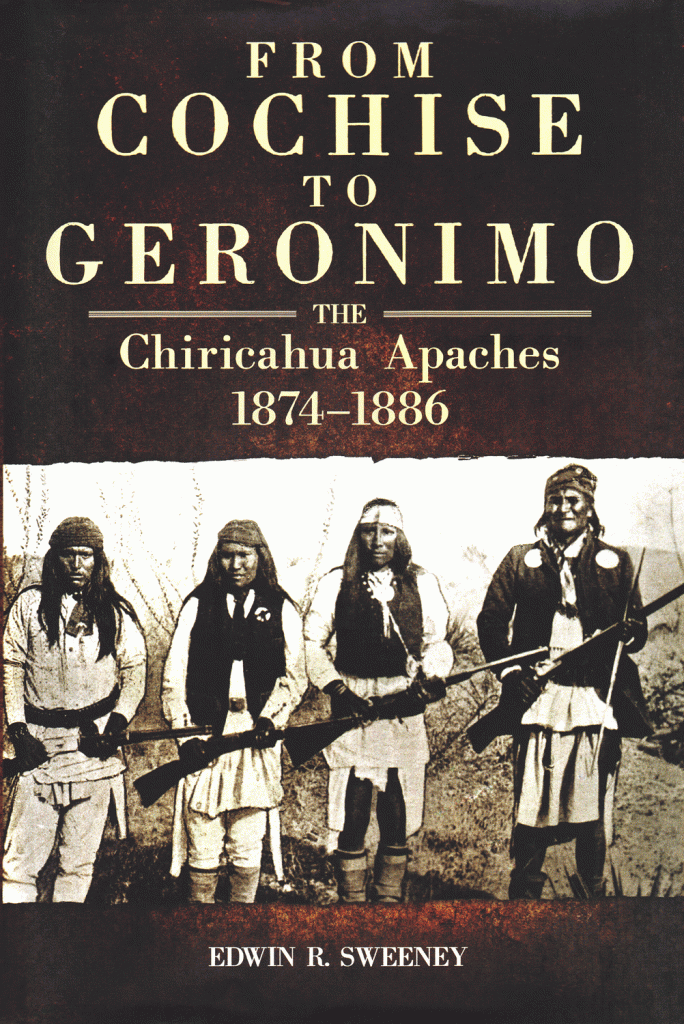
* The above-mentioned Custer book had Wynkoop resign as U.S. Indian agent prior to Custer’s attack on Black Kettle’s village.
An Apache wars book that also saw print in 2016 listed (in my opinion) the best Apache wars book of all time, Edwin R. Sweeney’s From Cochise to Geronimo: The Chiricahua Apaches 1874-1886 (University of Oklahoma Press, 2010), in its bibliography. For the record, Sweeney’s book proved without a doubt that an Apache woman named Lozen was not with Geronimo and Naiche when they told Lt. Charles Gatewood that they would surrender and end the 1886 Apache war in Sonora, Mexico (August 1886). This book (and again I’m not naming it) totally ignores what Mr. Sweeney’s work proved for the simple reason that it didn’t agree with what that writer chose to stuff down a clueless public’s throat. As this book has sold a lot of copies it has yet again reintroduced a proven error as historical fact.
Shame on this cretin.
My friends, this type of supposed historical writing is little more than fiction perpetrated by authors who have preconceived premises that are set in stone and to hell with facts or truth. Is it lazy research? Maybe, and maybe no; at least I hope not. But it matters not, for they have set back real history by a number of decades.
I know, the above is something that I should shun and ignore.
I cannot! Two upcoming blogs will deal with Indian wars and Errol Flynn
errors, fictions, and lies, and everything will be totally documented.
But first my Sand Creek manuscript must be in production with OU Press.
Finally
Sand Creek and the Tragic End of a Lifeway
and the winding road to today
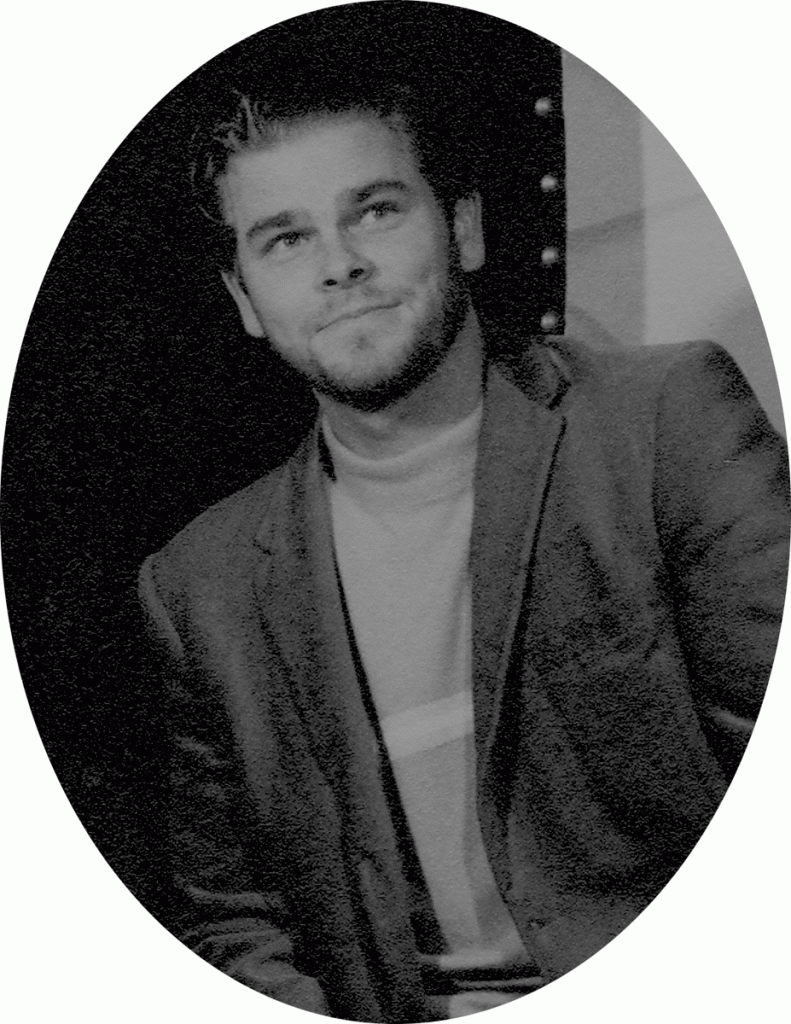
LK the December after working for VISTA. (photo © Louis Kraft 1970)
In case you don’t know, I never studied to become a writer. Simply put, and even though the late 1960s started this process, it was the decade of the 1970s that set me in motion to realize a future I never dreamed possible for it set me on course to walk my own road of decision and discovery. … If it wasn’t for the pure hell that I experienced while acting in Texas in 1976 I never would have become a writer. The events that I saw and lived through that summer placed an exclamation point on what I experienced in Austin (Texas) and Sapulpa and Oklahoma City (Oklahoma) in 1970. The year 1970 made me realize who I was while 1976 set me on course to become a writer. Both years put me at risk and yet pushed me to reach beyond anything I had yet imagined.
Over the years a lot of people have been in my corner. They have done many things to help me survive in the real world. This certainly began with my father (who always had my back) but then took off in 1970 when Cheetah Gates, my Volunteers in Service to America (VISTA) supervisor, told me that if I wanted to live I had better ditch the cowboy boots. I did. He then taught me how to survive while walking the streets of Oklahoma City at night (and this was after I had saved myself from having my throat slit in the wee hours of an Austin morn). It was during that long muggy summer where I found myself dead center in a racist storm. Oh, I should state that I was living and working with African Americans.
Six years later I again maneuvered through a Texas hotbed of racism and other nasty things. Richard Steele-Reed had cast me in What Did We Do Wrong and he almost had a heart attack when I threatened to quit when my salary was reduced after the seven days of rehearsals ended and the play opened.
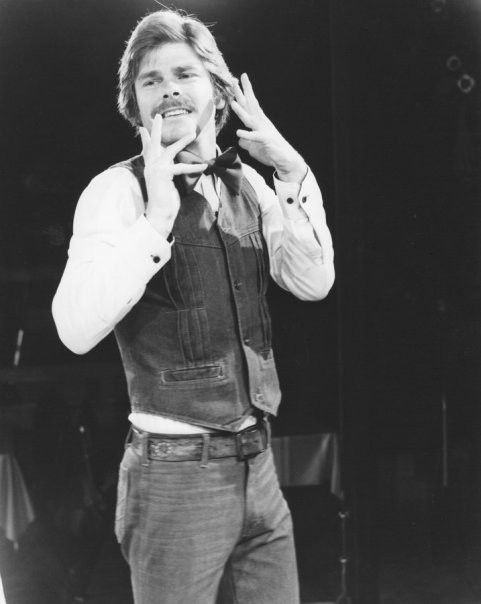
LK as Charlie, a struggling actor, in Eat Your Heart Out (Hayloft Dinner Theatre, Lubbock, Texas). I was on stage throughout the entire play. The Lubbock theater was in the round (the audience was on all four sides of the stage), and I have always loved performing this way. I also love breaking the fourth wall and speaking to the audience (which I again did with Cheyenne Blood and the Wynkoop plays in this century). (photo © Louis Kraft 1976)
Steele-Reed insisted that I behave (I said that I would as long as I received all my contracted salary for the run of the current play and that the next play included a hefty raise). He directed me in the following play, Eat Your Heart Out. The part of Charlie would be the best role that I ever played (actually twice; also in SoCal in 1977). But the key to that summer was that it led me to write a screenplay about this experience, and it landed my first literary agent, Ed Mernerth. Over eight years he not only taught me how to write character, dialog, and plot but did everything possible to sell and option my screenplays.
But the times were changing. By the mind 1980s I quit acting cold turkey and started selling freelance articles and talks. The learning process continued, but from this time forward it was on me. In 1986 I landed my first job using a computer without ever touching one. There was one catch, I had one week to learn how to use a computer. I did, and within a year I brought desktop publishing into the company. This landed me a publishing position with a “how to succeed in business” company. I then used this publishing experience combined with my freelance writing to land a technical writing job in 1990. When I asked the manager for training, he laughed and said: “I hired you as a technical writer; you’re on your own pal.” Soon after Jackie Johnson, a New York editor, bought my first novel, and for the next 20 or so years I combined freelance and software writing (and let me tell you that the days and nights and weeks were long).
Enter Chuck Rankin
Charles (Chuck) Rankin has been the editor-in-chief at the University of Oklahoma Press (OU Press), the top Indian wars publisher in the world, for many years. Chuck befriended me years back and did what he could to improve my writing. This was during the time after I walked away from an absurd second Charles Gatewood/Apaches book contract with the University of New Mexico Press but before the University of Nebraska Press turned Lt. Charles Gatewood & His Apache Wars Memoir into my best selling book to date. During this time of short-lived uncertainty before Nebraska jumped on the Gatewood manuscript, Chuck and I began a long off-and-on discussion about Ned Wynkoop and his journey from being a racist to someone who became a hated white man when he dared to stand up for Indians (and in particular the Cheyennes and Arapahos).
Mr. Rankin & the OU Press staff
The following reviews (see below) would not have happened if not for Chuck Rankin’s patience and guidance.

LK at the Western History Association convention in Newport Beach, California, on 17oct2014. On this day I introduced Pailin to Chuck Rankin, and spent good time great friends John Monnett and Durwood Ball (who, as then editor-in-chief at the University of New Mexico Press, jumped on Gatewood & Geronimo as soon as he read the manuscript in 1999), and Clark Whitehorn (currently executive editor at the University of New Mexico Press). (photo © Louis Kraft & Pailin Subanna-Kraft 2014)
For years Chuck hung close with me as we worked on the Wynkoop contract. After it was signed he stood firmly behind the manuscript. During this time he did everything possible to make the book as good as possible. Without Chuck and the entire OU Press staff, and this certainly includes production manager Steven Baker and copyeditor Beth Hadas, I’d probably still be wandering alone through a blazing SoCal desert without the possibility of publication. … For the record (and I touched upon this in my previous Sand Creek blog, John Smith, Chief Gordon Yellowman, and the Sand Creek Massacre) I am demanding. Chuck and the entire OU Press production staff, and this definitely included the art director Tony Roberts, dealt with me without revolting and insisting that I walk a pirate’s plank and drop into the Great White shark-infested waters off the coast of Los Angeles. Without OU Press’s entire staff Ned Wynkoop and the Lonely Road from Sand Creek would not have been what it became. I am forever grateful to everyone involved.
A few Ned Wynkoop reviews
Editor Greg Lalire (Wild West, April 2012): “Kraft . . . has produced the first full biography of an unusual fellow whose humanitarian stance toward Indians, empathy and ‘brave act of conscience’ made him, in the eyes of many, a villain or a traitor. … Certainly Wynkoop’s stance against the Sand Creek attack not only changed his life forever but also defines how he is remembered today. He had stepped beyond the accepted mores of the day and kept speaking his mind. Kraft compares Wynkoop to screen legend Errol Flynn, but Wynkoop’s life did not play out according to a Hollywood script. ‘Of course,’ writes Kraft, ‘Flynn’s humanity and his stand for justice always won out by the final reel of the film, whereas Wynkoop walked away from the pinnacle of this life knowing that he had failed.’”
Novelist and Editor Johnny Boggs (Roundup, April 2012): “Before he earned fame (or infamy among Indian-hating people in Colorado and Kansas) for speaking out against John Chivington’s massacre of Cheyennes at Sand Creek, Wynkoop led a colorful life … What’s the best way to fix the ‘Indian problem?’ Wynkoop was asked in 1868. ‘[T]o extend American citizenship to the Indians, and allow their representatives seats in Congress,’ he answered. No wonder he carried a gun [Boggs proclaimed]. This engaging, intelligent and well-researched biography is also even-handed, showing the dark side of an early champion of Indian rights. One of the best biographies of a Western figure to come out in years.”
Historian R. Eli Paul (writing for True West, December 2011): “Louis Kraft’s special skill as a biographer is taking a figure from Western history—one whom the general public should know but does not—and telling the story of a meaningful, significant life. He did this expertly with Lt. Charles Gatewood of the Apache wars and now has repeated the feat with frontiersman Edward Wynkoop. In an American history that trumpets great ‘last stands,’ Wynkoop spoke out against the mistreatment of the Plains Indians and made his own stand of conscience, one to be studied, remembered and admired.”
Historian and novelist Thomas McNulty (writing for Dispatches from the Last Outlaw): “This is the third of Louis Kraft’s books that I have enjoyed, and I believe this book is a masterpiece. I am selective in my non-fiction reading choices, and for good reason. There is so much available that is unreadable, if not incomprehensible, and from all of the New York publishers. History sells, and it has always outsold fiction ten to one. This is a historical fact. But the market is glutted with unreadable biographies. What really matters is a love for the topic. That, my friends, is a rarity among historians and biographers these days. Louis Kraft does not fall into that category. He cares very much about Ned Wynkoop, and his passion for his subject is evident on every page. … Although I have studied American western history at leisure, I had only a smidgen of knowledge about Ned Wynkoop. Thanks to Mr. Kraft, I am now enlightened, and immediately grateful. Wynkoop is fascinating, his story compelling, his era unlike anything we had seen before or since.”
Working as a biographer to create the Sand Creek manuscript
I have no clue what your current views are of what will perhaps be the most important book that I ever write, Sand Creek and the Tragic End of a Lifeway. … I am deeply connected with my book projects and the focus is always on people and their actions. This does not mean that I research or write with a preconceived bias for I don’t. As I have written in the past: I think that just about everyone I know, have known, or have written about think that they were right when they did what they did. This view will never change.
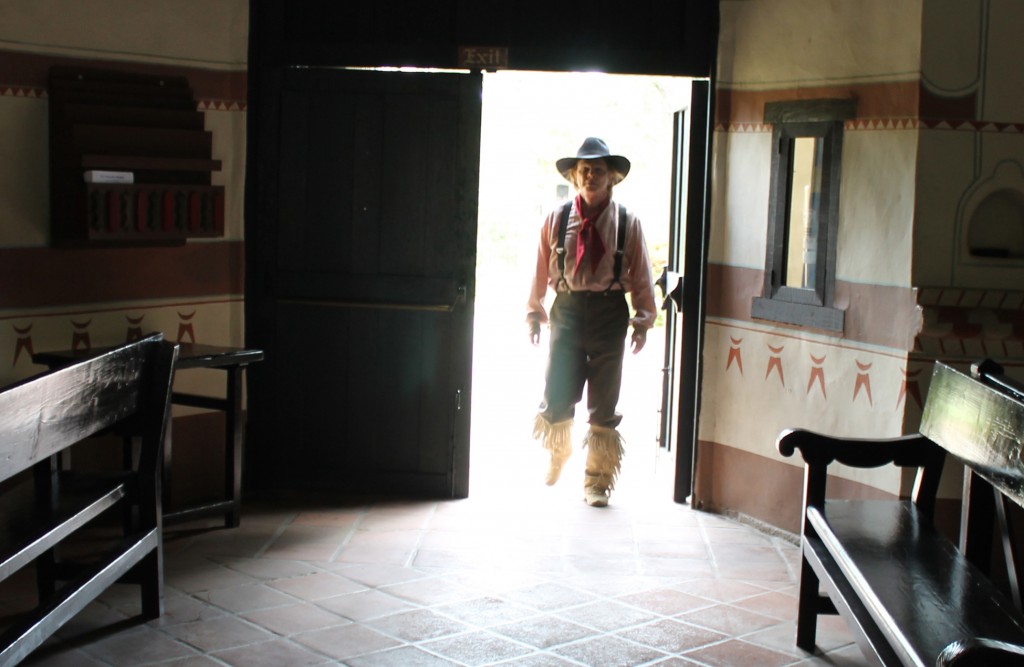
This image shows what I’m trying to say here. Mainly that until I have found what I need to propel the story of Sand Creek to conclusion it is a lonely path as I struggle to find and assemble the actions and facts that will allow me to complete the manuscript. Photo by Glen Williams. (image © Louis Kraft & Glen Williams 2012)
Our actions define us, and actions can and at times do include what we say. Documenting only the good in a person’s life makes them one-dimensional and unrealistic. Everyone does things that they later regret. Certainly I have. I know that I’ve hurt people, and I have been hurt by people. This doesn’t make me bad or them bad. It simply means that something happened. It adds dimension to a life and gives it color. Without color—that is the ups and downs, the good and the bad—a life becomes boring. Making a life worth knowing (and perhaps studying) requires multiple shades of color.
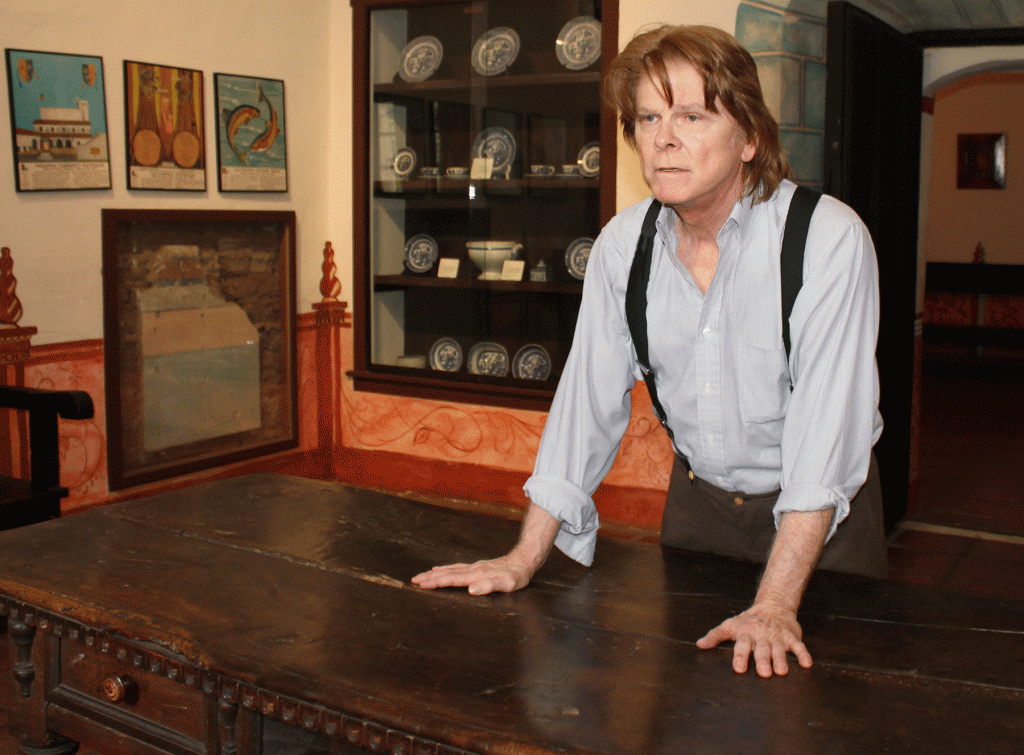
This photo by Glen Williams also deals with the search for a nugget that can perhaps become a piece of the puzzle. (image © Louis Kraft & Glen Williams 2012)
Do not doubt that the 1860s were a time of aggression and war, a time of hatred and butchery, and a time of fear. The Sand Creek manuscript is about people whose color, race, and religions were different. It is about people in conflict as they deal with the events that led up to an attack on a Cheyenne-Arapaho village populated by people that thought the U.S. military promised their safety until the U.S. government decided their future. It is also about the attack and the aftermath. If I do my job as a writer-historian you will walk with the leading players as they did what they thought right. What happened on November 29, 1864, affected a lot of people at that time, it has affected a lot of people since 1864, and it has affected me for decades. A writer-historian should never judge the people he or she writes about for this is for the reader to decide.
Chuck Rankin and a major announcement
I want to say something and I also want to make it absolutely clear by repeating myself. Chuck Rankin became my friend long before I ever became attached to the University of Oklahoma Press. Back in time when I wrote for publishers other than OU Press he didn’t shun me. No. Instead he talked with me, shared information with me, befriended me. He did what he could to aid my second Gatewood/Apache book see publication even though it would not be with OU Press. His kindness went far beyond friendship.
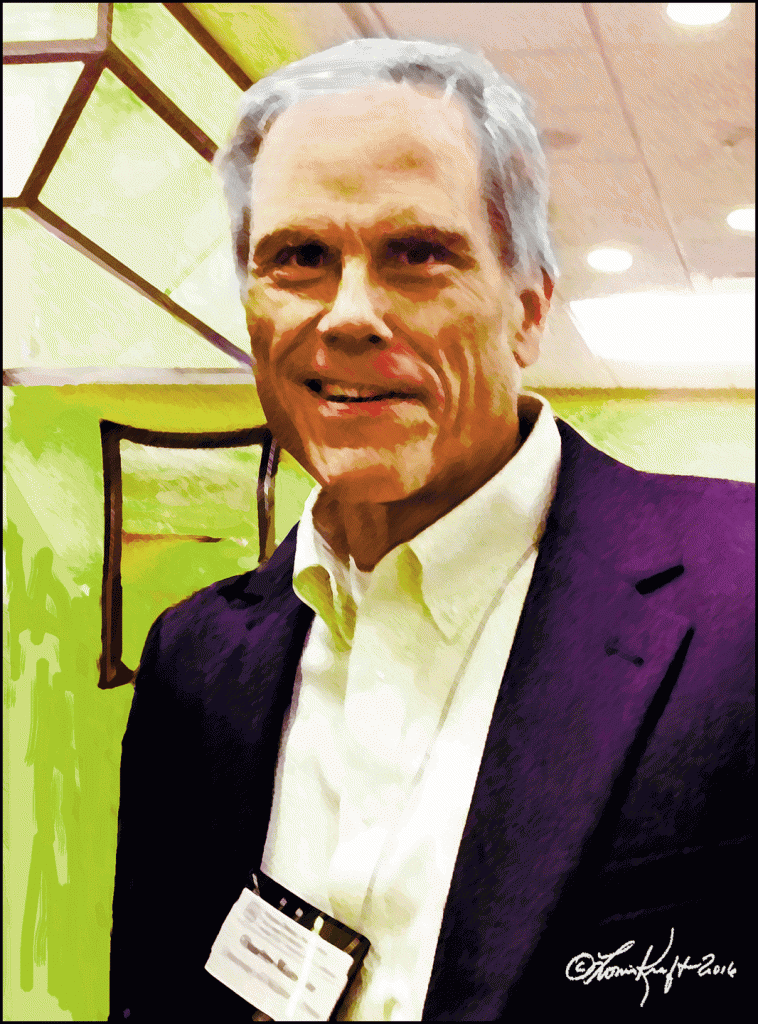
This is Chuck Rankin, my good friend and great editor. All I can say here is that without Chuck my writing life and world would have suffered. I’m lucky to know him and look forward to our relationship as it moves into our future. (art © Louis Kraft 2016)
Our working relationship began in the early part of this century and over time led to the Ned Wynkoop and then the Sand Creek contracts. Chuck has supported my work and effort every step of the way.
But … BUT …
Years pass and life changes. Several months ago Chuck Rankin retired as editor-in-chief at OU Press (effective 31dec2016).
When I heard the news I was shocked and concerned, as he has been the driving force behind my Sand Creek manuscript. This began years back when he pitched me to write the book about the 1864 attack on the Sand Creek village. I had said no, that I don’t write about battles. Chuck immediately made it clear that the book would not focus on the battle; rather it should focus on the lead-up to the attack, the attack, and the aftermath. I hesitated, thinking that this wasn’t a project for me. … Our conversation continued, and a year and then another passed. FinalIy I pushed for writing a manuscript driven by peoples’ actions. Eventually Chuck and I agreed on a storyline. Next came the written proposal and this in itself was a project (the final draft was 37 pages long) but it defined what I needed to do to create a manuscript that had value.
When I spoke to Chuck about his retirement he let me know that he had worked out a deal with the press that would allow him to continue working with selected projects. Best, he made it clear that he was behind Sand Creek and the Tragic End of a Lifeway one hundred percent and would see it through to completion.
I can’t begin to tell you how thrilled I am. Thank you Chuck from the bottom of my heart.


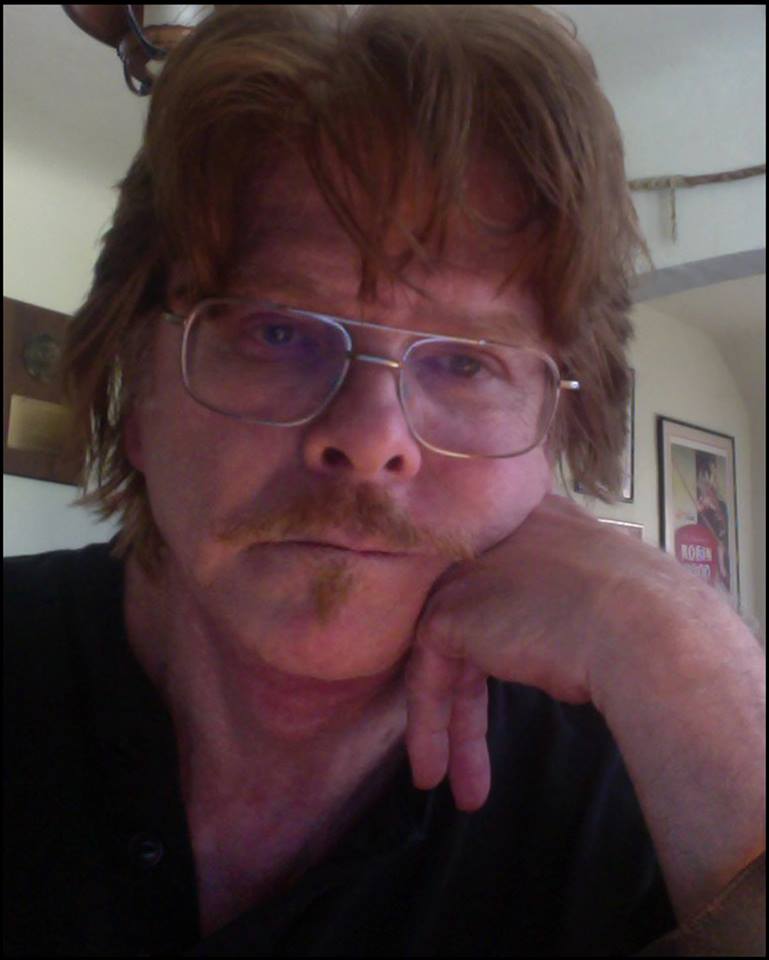
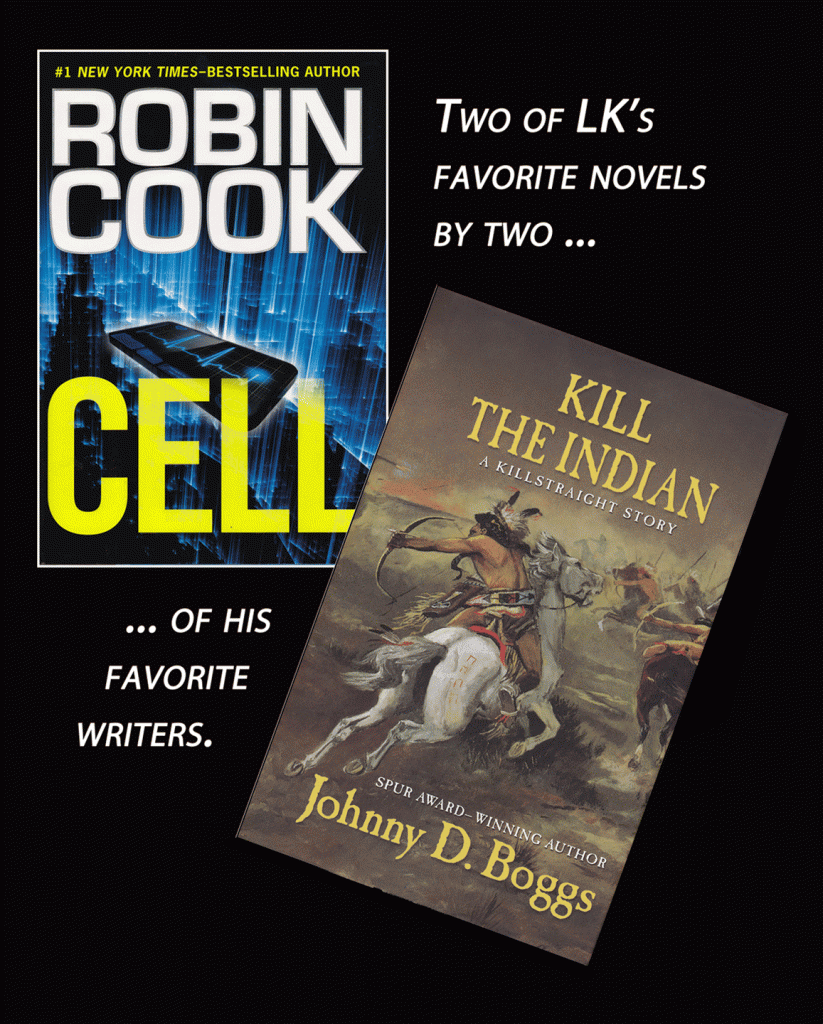 The Discovery is not a book that deals with race relations and horrendous murder and sexual mutilation of people of different colors and religious beliefs. That said, it is a story that is just as valid for it deals with life experiences that can make or destroy lives. Although The Discovery is a period piece set in the not-too-distant past (1951-1973), it focuses on a very important subject in our lives today—the medical world, and to be more specific, malpractice.
The Discovery is not a book that deals with race relations and horrendous murder and sexual mutilation of people of different colors and religious beliefs. That said, it is a story that is just as valid for it deals with life experiences that can make or destroy lives. Although The Discovery is a period piece set in the not-too-distant past (1951-1973), it focuses on a very important subject in our lives today—the medical world, and to be more specific, malpractice.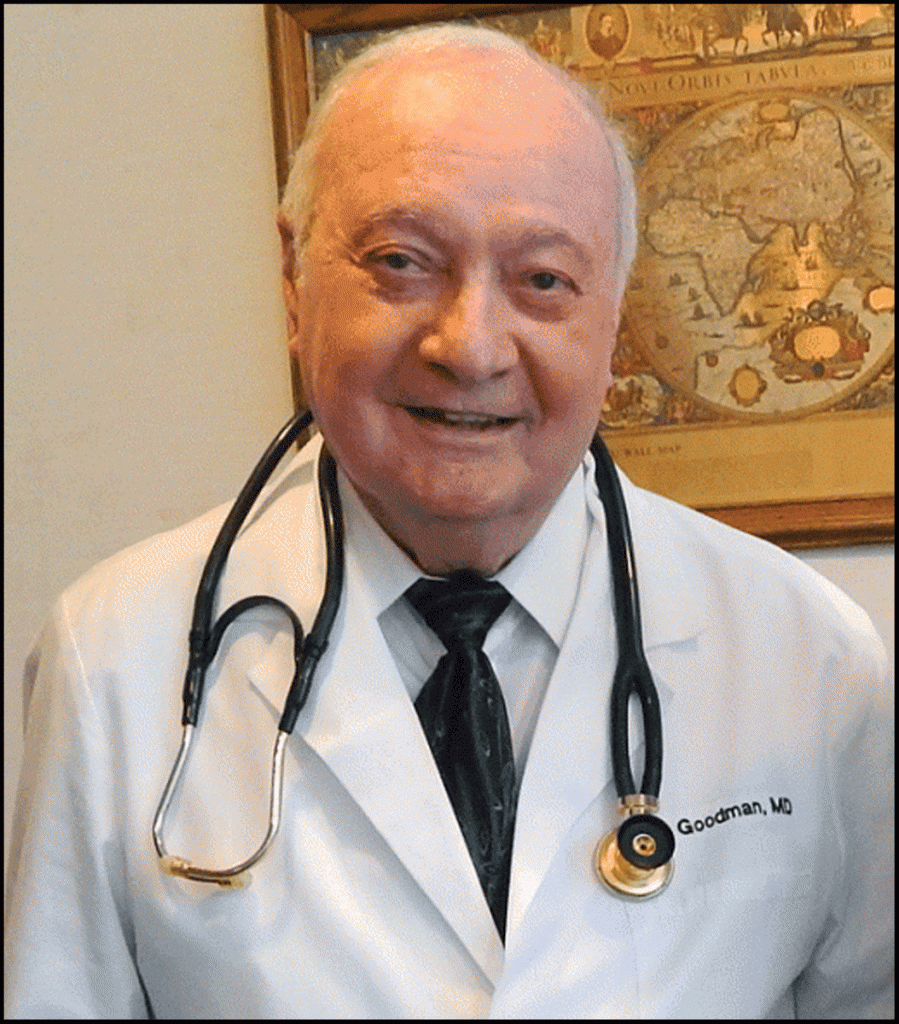
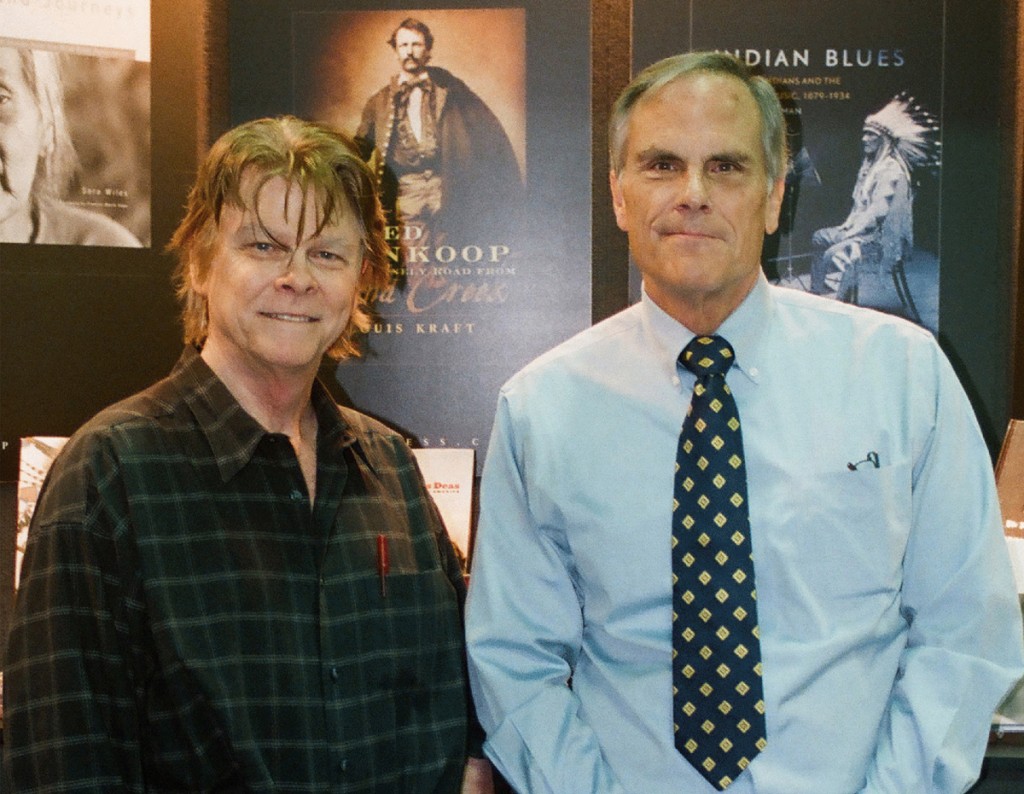
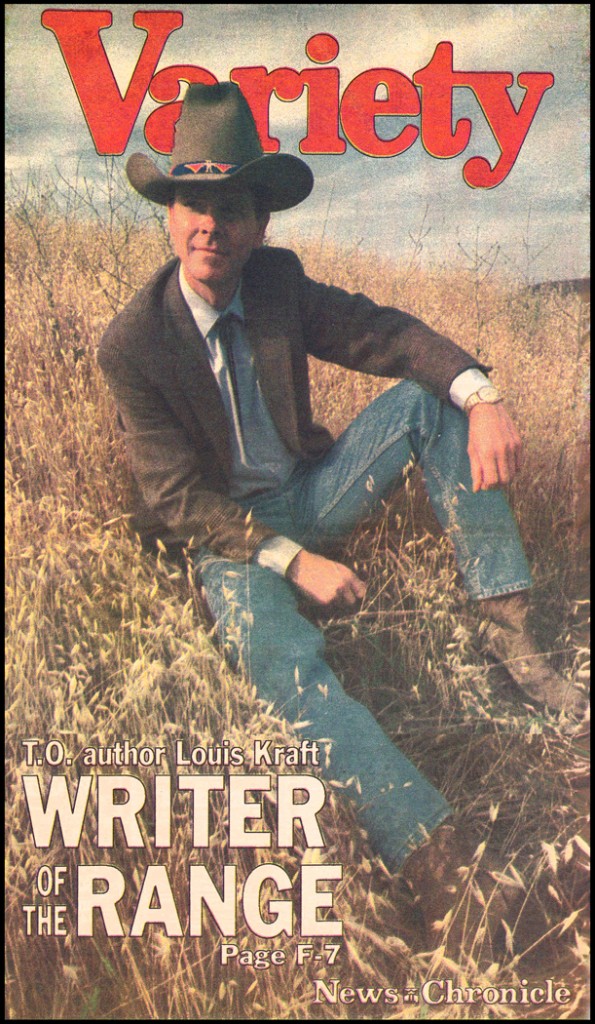
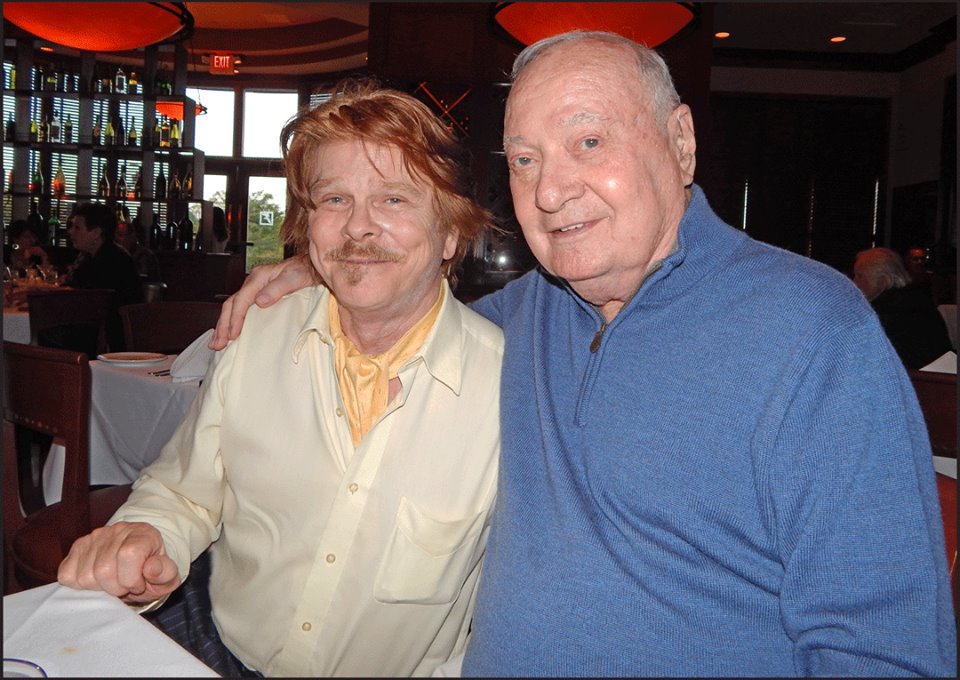
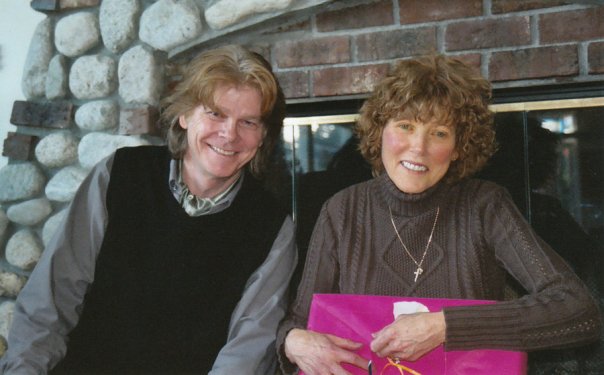


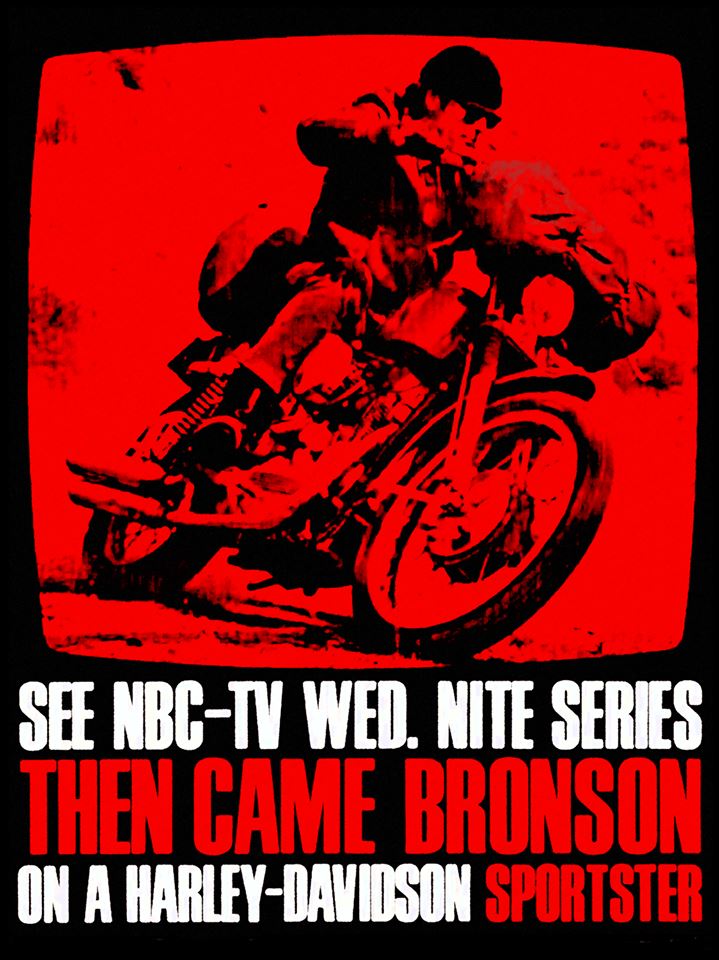
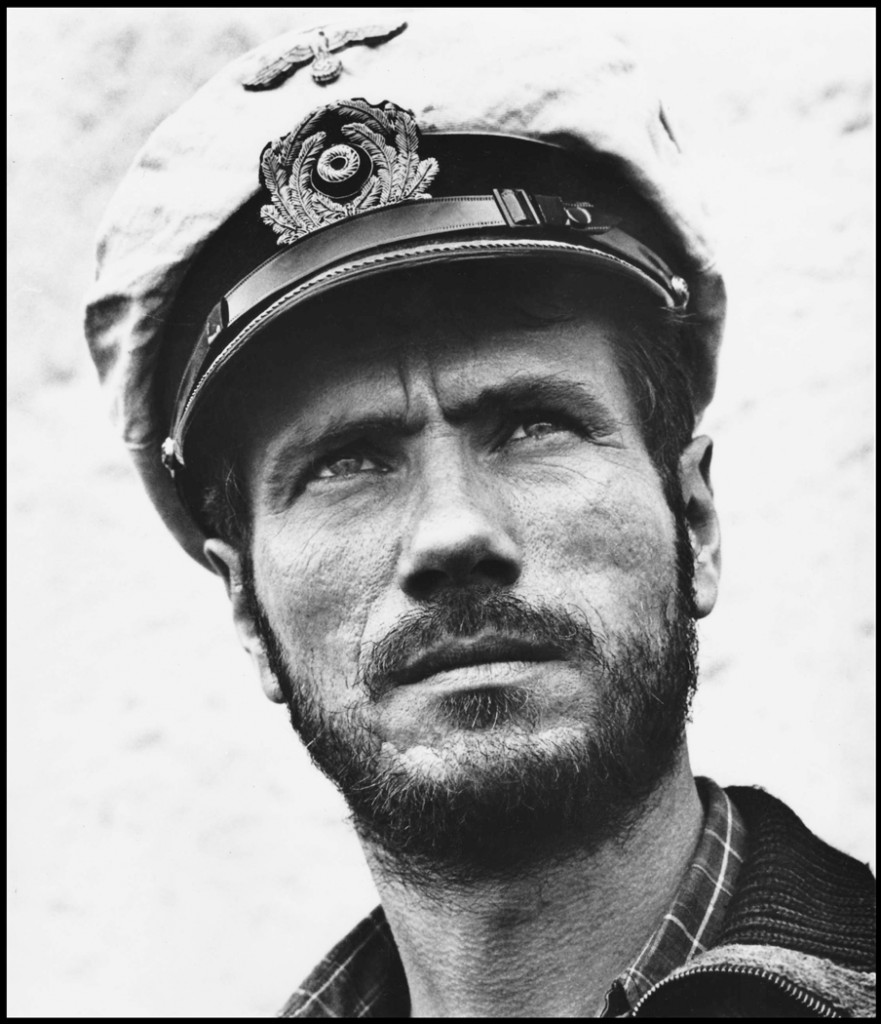
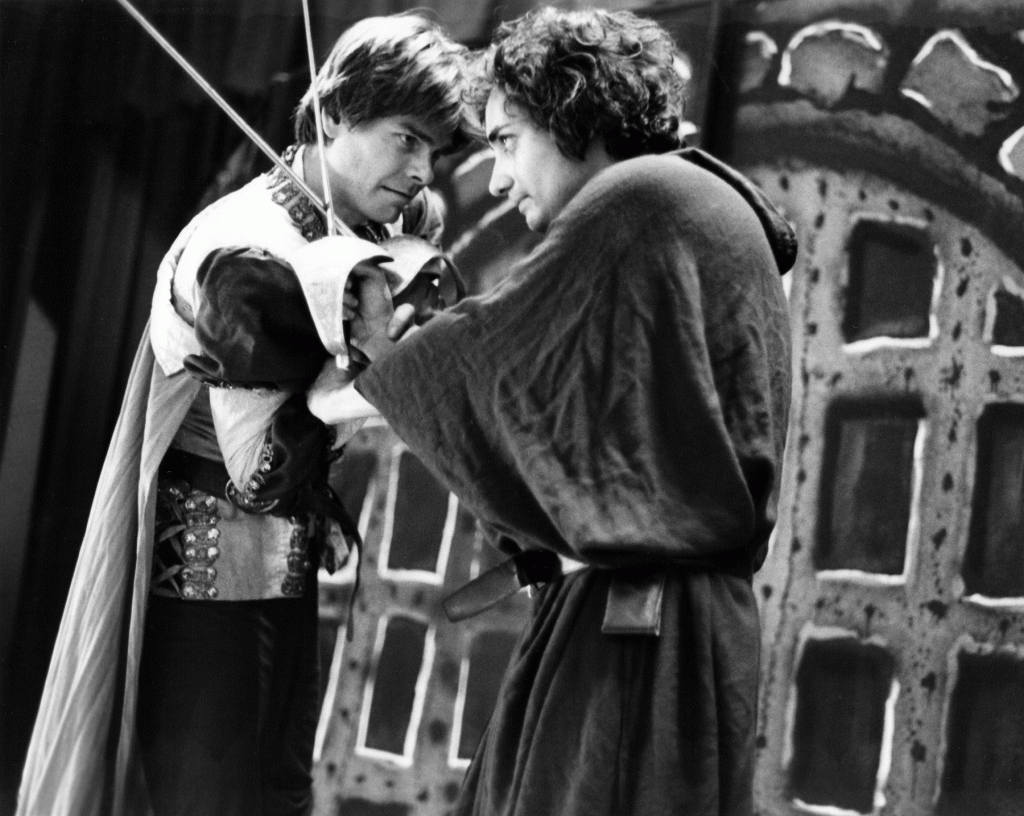


 LK’s days are limited. Hopefully not in life or in Los Angeles. (Huh? Nada; I didn’t say that!) I have a lot to do yet and Los Angeles is like no other city (for example: It is gold mine for anyone writing about Errol Flynn and Olivia de Havilland). I should add—and this is important—that there are more Thai people living in Los Angeles than in the rest of the USA (also there are more different races of people living in LA than in any other city in the USA), but more important is that Pailin loves living in the City of the Angels. She has a wonderful community of friends and plenty of massage customers who adore her, and now she is a part owner of the Green Day Spa.
LK’s days are limited. Hopefully not in life or in Los Angeles. (Huh? Nada; I didn’t say that!) I have a lot to do yet and Los Angeles is like no other city (for example: It is gold mine for anyone writing about Errol Flynn and Olivia de Havilland). I should add—and this is important—that there are more Thai people living in Los Angeles than in the rest of the USA (also there are more different races of people living in LA than in any other city in the USA), but more important is that Pailin loves living in the City of the Angels. She has a wonderful community of friends and plenty of massage customers who adore her, and now she is a part owner of the Green Day Spa.
